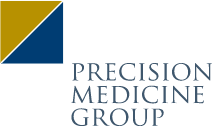First published on PharmaLive.com here
By Read Roberts, Director, KOL Data Solutions at PRECISIONscientia, a Precision Value & Health team.
As you read this article between Zoom calls and web-based training sessions, it’s hard to remember a time when “in-person” meetings were the only way to interact with colleagues. We’ve all seen the changes that have come out of the pandemic and the continued uptake of technology to communicate.
Now that the floodgates have opened, and businesses are seeing what actually can be done virtually, some things just make more sense to remain that way. And the proof is in the pudding – Pfizer announced in January that it’s reducing its U.S. sales staff “as it expects doctors and other healthcare providers to want fewer face-to-face interactions with salespeople.” More and more medical congresses are moving fully—or partially—to web-based events, and commercial office space is becoming less of a hot commodity. All these factors point to a fundamental change in how healthcare practitioners (HCPs) interact with their industry.
Introducing Digital Opinion Leaders
The identification and alignment with Key Opinion Leaders (KOLs) have long been a key component in healthcare communications strategy—doctors trust their highly esteemed colleagues for advice, more than salespeople, and rightly so. Data from an HCP Digital Education Survey by Healthcasts indicated that 83% of HCPs are likely to prescribe a new drug if it’s endorsed by an opinion leader. Younger HCPs naturally tend to be more active online, but as we all have become immersed in technology-enabled communications, many more doctors are casting their eyes in the direction of a new breed of KOLs—Digital Opinion Leaders (DOLs). DOLs are individuals who have garnered a high level of impact online in focused medical specialties. Unfortunately, the KOLs your company is already aware of and possibly engaging with, are not necessarily the most impactful thought leaders in online platforms (though there is often overlap). In 2022, it will no longer be “nice to have” an idea of your therapeutic area’s DOLs—it should be considered quite necessary.
When a DOL Tweets, People Listen…and Retweet
In addition to managing a successful medical career, Stephanie Graff, MD, FACP, the Director of the Breast Oncology Program at Lifespan Cancer Institute, has garnered more than 13,000 followers on Twitter. Last December, Dr. Graff shared posts of new research coming out of the 2021 San Antonio Breast Cancer Symposium, which she found compelling. Within hours, her followers shared her posts with their own followers, reaching nearly half a million social media users.
Young doctors like Dr. Graff can create a passionate following by sharing their uniquely informed perspectives, and they are becoming more common. With so much going on at any moment, people are looking for experts in incredibly narrow fields to help curate the massive amount of information out there. The open nature of social networks allows some degree of natural selection to take place—those that are sharing the most interesting, up-date information will organically “rise to the top” and gain more and more influence.
The Smartest Person in the Room Isn’t Always the Loudest Voice
The process for identifying DOLs takes more digital sleuthing than one would think. With so much noise online, is not as simple as just looking for the loudest online voices. It’s important to take into consideration a number of factors to find the right fit.
Outside of these methods on how to find the most highly regarded DOLs, we need to ask—where do we look? Instagram, Facebook, Twitter, Snapchat, LinkedIn, Weibo—the places to search can quickly feel exhausting. The fact is, you can’t look everywhere—instead, it’s best to focus on what’s most important.
- Brand/safety should always be kept front of mind.
Look for red flags such as posts on non-factual information, controversial opinions, and aggressive online activity. Pharma companies should also investigate if they are already working closely with any competitors. - Reach and Engagement—looking beyond just followers.
Examine actual reach and engagements such as likes, comments, and shares. We call this extended reach—an expert may have “x” number of followers but a high amount of engagement, so their messaging is actually shared to with many more people. - Remember relevance.
How on-subject are conversations and discussions? Is the person speaking mainly about the brand’s focus area or is it just one of many topics? Additionally, who makes up the DOL’s audience—are they mainly other doctors, or a mix of other types of non-targets? - Consider impact—how influential are these expert’s posts?
Are they being picked up by other media sources and activating new discussions? How engaging are their posts? It is important to evaluate this to ensure that an active account is not operating in an echo chamber but is in fact a DOL of interest. - Finally, evaluate a DOL’s authenticity.
Does the influencer have genuine authority in a subject area? Are their posts unique and reflective of their personality?
The Overwhelming Number of Platforms Can Be Overwhelming
Our vote for key sources for finding DOLs in Pharma goes to Twitter, LinkedIn, and Instagram (the latter in particular for more aesthetic fields, like Dermatology). The publicly available, open nature of Twitter and Instagram gives experts the ability to speak to the whole world. Any truly influential expert with a large presence on another more closed network (e.g., Doximity or Sermo) will also work on building their audience on these platforms as well. LinkedIn operates in more of a closed environment, but it is geared towards professionals by its nature and makes a good starting point for DOL searches.
As an added plus, Twitter offers a powerful software API—meaning that external software platforms (like we offer at our company) can churn through its billions of conversations and help identify Opinion Leaders in very narrow fields. Focus on going deep rather than wide to “fish where the fish are” and don’t get too concerned with combing every platform out there.
Start sleuthing—the world has changed, and 2022 is the year to get to know the DOLs in your field.
For more information on PRECISIONscientia KOL Data Services click here







